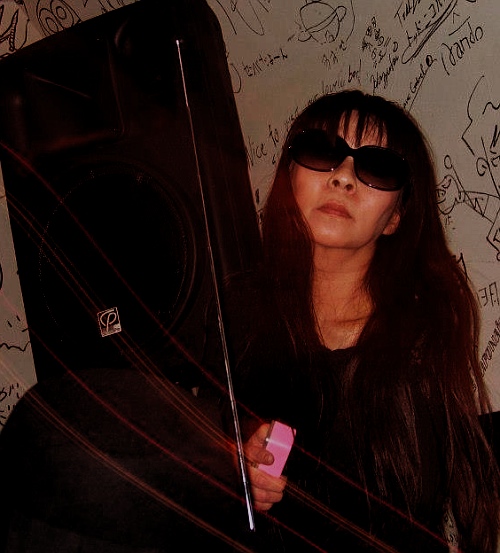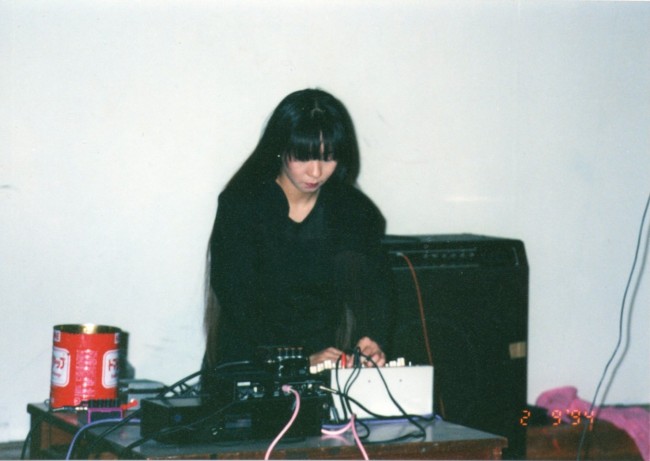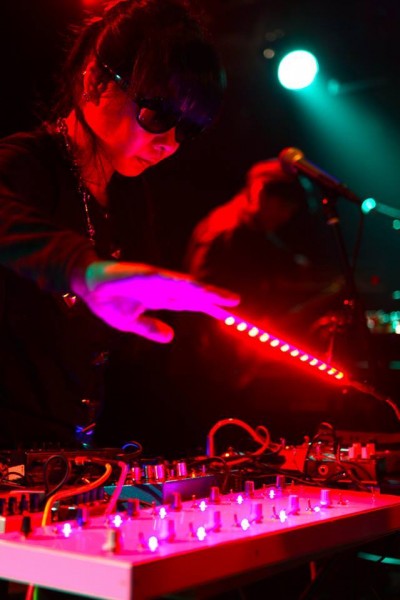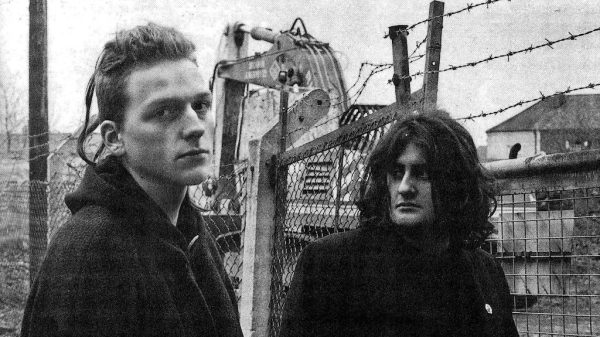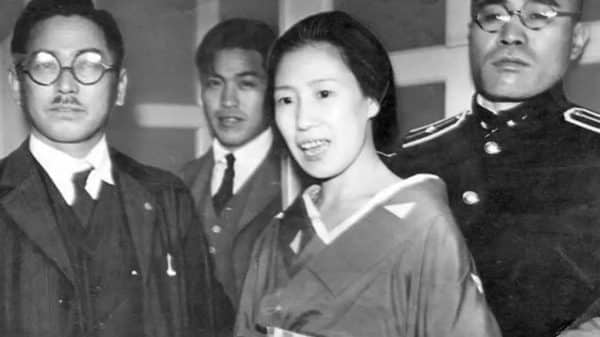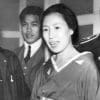Some of you might not have heard of Mayuko Hino. There are a number of reasons for this.
Hino was a key player in the noise scene in Japan that became part of a cultural exchange that David Novak, in his book Japanoise, calls ‘Cool Japan’. What ‘Cool Japan’ refers to are all those cultural icons and signifiers, from the kawaii (cute) phenomenon of things like Pikachu to the supernatural terror of Sadako in Hideo Nakata’s ’98 classic Ring, that seeped into our pop-cultural consciousness and left us enchanted by a place both seemingly exotic and hyperreal. Extremity was a huge part of this; our unquenchable thirst for the extreme fuelled the plethora of films released through Tartan Asia Extreme, where a proliferation of Yakuza movies and films with long haired young girls coming back from the dead dominated ‘world cinema’ sections in stores across the West.
Our consumption of what we in the West, like opportunist magpies, chose to include under the umbrella of ‘Cool Japan’ was all part of a transnational mediation that shaped this image. Japanese noise music passed the test but its inclusion was only fragmentary. Somewhere along the way, for some unknown and equally unjust reason, Merzbow (Masami Akita) came to stand alone as a genre to himself. Merzbow became and largely remains the marker of all that was and is noisy in Japan. The likes of Hino and her band C.C.C.C., along with acts like Hijokaidan, Incapacitants and Masonna, were and remain largely overlooked. Particularly in musicology, plenty has been written about Merzbow, but far less about any of these other acts. It’s only because of the geeks and the aficionados that these bands have any discernible presence.
Perhaps this is a matter of production. It’s no secret, even for the casual listener, that Akita’s productivity and output as Merzbow is immeasurable. His collaborative efforts with the likes of Mike Patton and Alec Empire would have went some way to helping this celebrity. And it’s also perhaps a matter of definition. For a genre so disparate, so fleeting, whose vocabulary invites an array of slippery terminologies, having one fixed point of reference helps the conversation. But in spite of whatever reason, and against this lazy historicising and cultural selectivity, it remains that Mayuko Hino, as part of C.C.C.C. and now her first solo project, is one of the most important figures in Japanese noise music.
C.C.C.C. (Cosmic Coincidence Control Centre) have always stood out in my listening to noise music, and not for the reasons typically thrown around in discussions of noise. Their sound doesn’t suffocate me. I’m not bound in a masochistic relationship to it. At no point am I forcing myself to listen through some kind of testosterone-fuelled act. Rather, there is a lushness to their music, or as former member Fumio Kosakai describes, in the linear notes of C.C.C.C. early works a ‘profound psychedelic noise’ that I haven’t quite heard anywhere else. Kosakai attributes this to Ryuichi Nagakubo’s bass playing, which ‘gave members uncontrolled licenses to perform anything they wanted, including physical actions.’ Anyone who has heard founding member Hiroshi Hasegawa’s solo work post-C.C.C.C. will attribute this profundity to him. Hasegawa’s command of noise and the sonic sculptures he constructs and deconstructs in effortless gestures is unparalleled. And then there is Hino, creating wave upon wave of noise through sheets of metal and letting out some of the most exhilarating and terrifying screams that have ever been put to record. The genius of her vocal is how sporadic it is. In the live recording from Donzoko House in Kyoto from 1991, her vocal makes itself known only after about 9 minutes of noise but when it does it comes with ungodly measure. Collectively, they were the most rock and roll of all the noise bands, not overly preoccupied with, as Kosakai’s admits, ‘a political fight in the art named “avant-garde”‘ but instead driven by a raw excess and sexuality with the literal aim to, as Hino puts it, ‘fuck art and fuck music.’
Hino was essential in C.C.C.C.’s raw, animalistic energy. She was more than a noise maker. She was the visual embodiment of Japanese noise music’s early aesthetic. With her background in dance, theatre and her appearances in a number of ‘pink films’ – one of these films, The Rapist of 13 Girls Successively, was directed by one of Japan’s most subversive directors of the ’60s, Koji Wakamatsu – Hino would often recall her erotic past on stage. She would dance naked; she would tie herself in rope in an act of bondage; she would pour hot wax on her naked breasts; she would throw herself around the stage and all the while making sublime noises.
Japanese noise music’s early relationship with eroticism and the philosophical excesses of French thinkers like Marquis de Sade and Georges Bataille is no secret. Merzbow smeared his early analogue recordings in pornographic scraps, he fetishized bondage and even scored and directed a number of harakiri films which showed young uniform clad girls half naked committing seppuku. And since our main interaction with noise, in the West, was through Merzbow, both eroticism and noise seemed indissociable. So Hino may not have pioneered this gesture but what she did was own and control it.
Part of the revulsion some people felt with this music’s early obsession was its implicit misogyny; women were exploited for the gain of shock and awe. Particularly in Merzbow’s imagining, the domination and brutalization of the female figure was always committed through the male gaze, at no point did Akita put himself in the firing line. But Hino’s relationship to the erotic was always hers, and always on her terms. A dancer and pink film performer first and foremost, Kosakai tells us how she came along to formative practices and simply watched before saying ‘I would like to join as a voice performer now.’ This careful measure she carried into her performance. At no point did any members join her in her onstage eroticism, at no point did the male members interfere in an eroticism that was distinctly hers.
After C.C.C.C. disbanded, Hino disappeared; perhaps another reason why she is not remembered so regularly by enough people. Her last documented noise efforts end around the year 2000. But Hino has returned, not only as a member of DFH-M3 (along with noise legends Junko and Ranko Onishi), but also with her first solo record called Akashic Records which is set to be released on July 30th. A sneak peak at the track ‘Mediator’ on Soundcloud sees Hino toying with some industrial textures before her trademark waves of noise blast through the track like a gust of wind. But it also shows Hino playing with emptiness as the track builds both patiently and steadily, and quietens at unusual junctures. It’s a promising teaser from the return of one of the world’s noise pioneers. And as a noise geek myself, it’s a pleasure to have our queen back.


